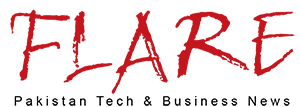Bricks-and-clicks – the current and future retail reality
Lahore: February 13, 2018-There is no stemming the digital tide. 2016 saw digital advertising revenues overtake TV ad spends, with revenues for the former surpassing the latter.

Ride this bus or get thrown under: the cultural and commercial imperative to go ‘live’ and be connected has engulfed commerce. And businesses both big and small, whether e-tailers or brick and mortar, have done well to heed this.
As digitization continues its, albeit belated, onward march in Pakistan, it is worth considering how big brands are leveraging e-commerce, and its concomitant channels of digital marketing, to bolster brand presence and generate revenue.
On the marketplace front, Daraz has emerged a key portal, housing brands both humble and huge, offering them a medium to optimize e-commerce prospects and drive conversions.
Unilever and Daraz on their mutual embrace of ecommerce
Unilever launched Pakistan’s first FMCG ecommerce solution with Daraz back in 2014. Then, ecommerce was merely in gestation phase. Four years later, Pakistani ecommerce has come of age and stands on firm ground. Yes, it is still young, much like the predominating demographic it serves in Pakistan.
With 30 million active internet users in Pakistan, brands are redoubling their attention to ecommerce.
Daraz Account Manager, Maheen Yousuf, who has worked closely with brands in the FMCG space, insists that “major players like Unilever recognize that e-commerce is a future-proof investment.”
Assistant Manager Ecommerce at Unilever Nauman Lakhani speaks about the brand’s leveraging of ecommerce on Daraz. “If businesses do not begin to create an online presence for themselves today then they run the risk of being left behind in a highly competitive digitizing landscape. As consumers place higher value on convenience and accessibility against the backdrop of busier and accelerated lifestyles, they’re turning to online shopping.
That’s where Daraz and a host of leading, heavyweight FMCG players enter.
Which categories have the most potential for digital success?
Nielsen’s research (The Future of Grocery E-Commerce, Digital Technology and Changing Shopping Preferences Around The World, April 2015) about digital shopping identified two barriers and two enablers that help identify categories that are well-positioned for e-commerce success.
Stock-up categories like personal care and household products are prime inventory, while immediate use items like fresh and frozen foods, condiments and beverages will be slower in adoption.
Data from Daraz bears this out, with Unilever’s highest-sellers for 2017 being Surf Excel washing powder 1Kg, and FREE Lux Peach & Cream 150 gm with Peach and Cream trio pack.
Online grocery sales have been boosted by continued progress in mobile adoption and broadband penetration, particularly in developing regions like Pakistan. Zooming out and speaking of the broader region, Asia-Pacific consistently ranks above the global average for adoption of online retailing options. Ordering online for home delivery is the most commonly preferred retailing option in the region.
Why is online shopping for FMCGs so prevalent in Asia-Pacific compared with the rest of the world?
A few factors come into play. First, Pakistan and its neighbours to the north, east and beyond comprise a rapidly urbanizing region, with a high population density making the home delivery model economically scaleable. Paired with low labor costs, one has the necessary ingredients for an ecommerce boom in place. Additionally, growing smartphone ownership and usage have created significant mobile commerce opportunities.
Willingness to use digital retailing options in the future is highest in the developing markets in the Asia-Pacific (60% on average), Latin America (60%) and Africa/Middle East regions (59%), and trails in Europe (45%) and North America (52%).
In the consumer packaged goods industry, change has been more evolutionary than revolutionary, but digital is redefining what it means to “go” shopping. And Daraz is on the frontlines of this evolution. Shoppers are growing accustomed to the benefits of digital in other retail categories and now expect them in the realm of grocery as well. Savvy brands and retailers like Unilever and Daraz, respectively, are winning by leveraging technology to enhance the shopping experience and satisfy consumers’ evolving desires.
What is the relationship between offline and online shaping up to be like?
This is an aspect of e-commerce that is often glossed over and misunderstood. In Nouman’s words, “Some businesses worry that they could lose the importance of their physical channels, but in reality having an online presence adds to revenue instead of cannibalizing already existing business channels.”
Indeed, the Nielsen study corroborates this claim, claiming that a ‘bricks versus clicks’ approach is not a relevant paradigm anymore. Bricks-and-clicks is the current and future retail reality.
And with an established e-commerce platform like Daraz available to the likes of major multinationals like Unilever, the clicks- and additions to cart many of those clicks invariably bring- are here to stay.




